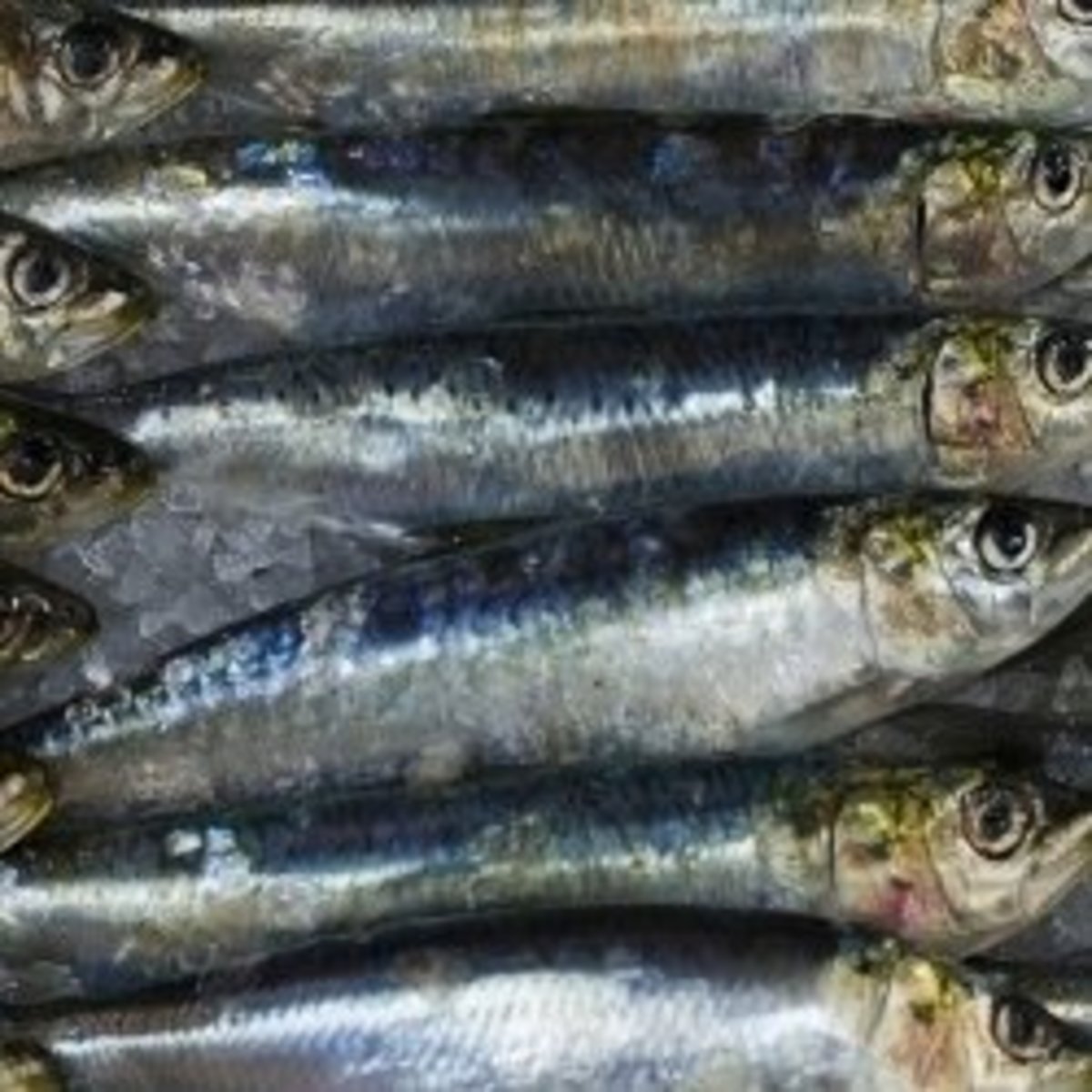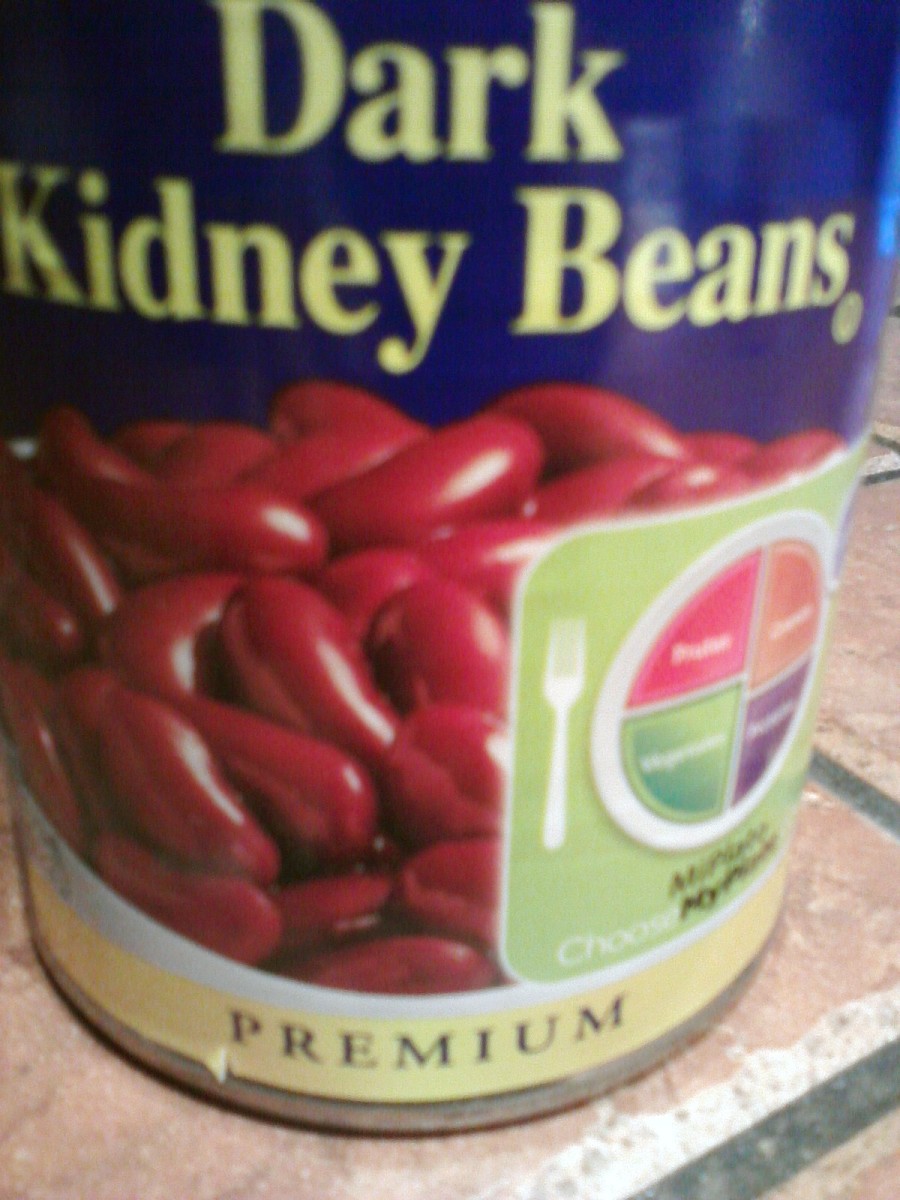Learn How to Process and Eat Wild Acorns
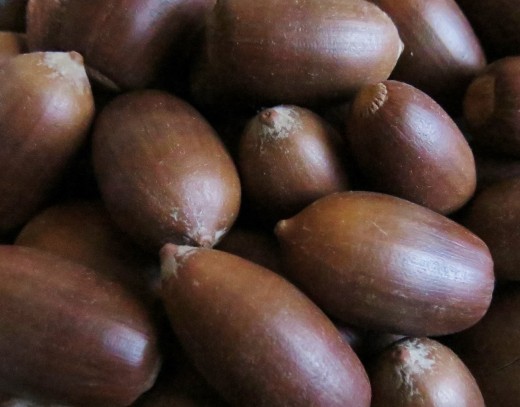
Rate this article
Why do it?
Every autumn when the leaves begin to turn, the acorns start to fall. Big and small, long and round, they cover the ground in parks, bounce off car and fill up your yard and street.
They're so plentiful you'll never have any trouble collecting them, they're free, and above all, when prepared right, they are delicious.
Many people may have tried an acorn long ago, and quickly spat it out due to the horrible bitter flavor. That flavor comes from compounds known as tannins which occur naturally in the acorn, in part to discourage them from being eaten.
Fortunately, these bitter flavors are very easy to remove, and when you're done you'll be left with just the sweet nuts.
You can use them in pancakes, breads, and other baked goods for a rich, creamy nutty flavor.
- Pick up your acorns from your favorite oak tree, selecting for nice-looking large ones.
- Shell all your acorns
- Check for and remove any that look discolored, moldy, or wormy
- Chop them coarsely, using a cutting board and a large knife
- Fill a large pot with clean water, and add the acorns. Cook over medium heat.
- When the water becomes tea-colored, drain them and replace with clean water. Keep repeating this process. It can take up to five or six hours.
- Sample an acorn. It can still have a hint of astringency but it should not be unpleasantly bitter.
- Blend and use in recipes, or pack into bags and freeze until you're ready for it.
Step 1
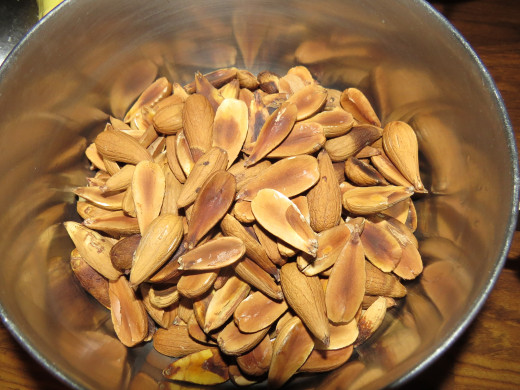
Selecting your acorns
There are hundreds of different species of oak tree. Some have more tannins than others, some have big acorns and others have small ones.
All of them are edible!
The important factor in selecting the right acorn is size. The biggest ones you can find are the best, because you want the maximum nut for your effort when you're shelling them.
Step 2 - Cracking your acrons
The first step is to crack and shell all of your acorns. I do this using a nutcracker. The shells are slightly flexible, which can make them difficult to crack if they aren't fully dry. If you're having trouble cracking them try putting them on a baking tray in the oven on low heat for a little bit to dry them out.
Step 3 - Check for bad ones
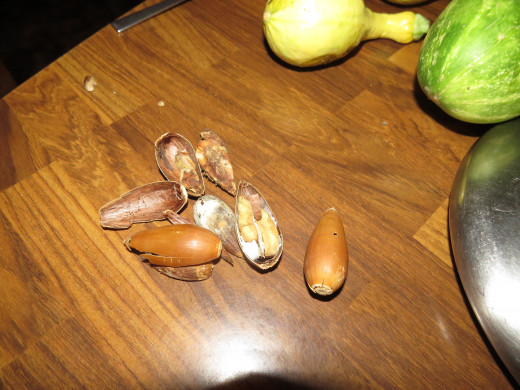
How to spot the spoiled ones
Look carefully at your acorns as you crack them. Healthy acorns should be creamy golden to brown colored [see the first image for examples of healthy acorns]
Your acorns should NOT:
- Have small, round holes in the shells
- Look moldy
- Emit puffs of dust or powder when cracked
- Be blotchy yellow-white and crumbly
- Be blue, green, or other strange colors
If you find ones that look like this, throw them away.
Step 4 - Chop them
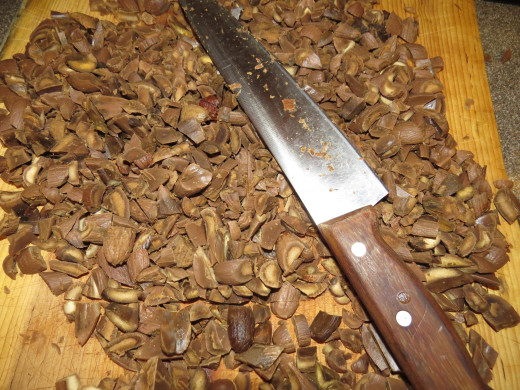
Chop your acorns coarsely with a knife and cutting board. Reducing the size of the pieces makes it easier to remove the tannins, and makes the whole process a lot faster. But don't get them too small, or it will be hard to drain the water off without losing your acorns in the process.
Step 5 - Get them cooking
Put the chopped acorns into a large pot and fill it with fresh clean water. Cover and place on the stove over medium to high heat.
Step 6 - Changing the water
After about 20 minutes, the water will become a dark tea color from the tannins that are leeching out. Pour the water out and replace it with fresh, and return it to the stovetop. Keep repeating the process every time the water looks dark [the intervals between changes will grow longer as you remove more and more of the tannins]
This process can take up to five or six hours depending on the type and bitterness of your acorns - but if you can't be there to watch it, just turn them off and let them steep in the water. I usually do this over a period of days, bringing them to a boil or changing the water whenever I'm in the kitchen, and just setting them aside to wait when I'm busy.
Step 7 - Knowing when they're done
The easiest way to know when they're done is to sample one. It can still be slightly astringent, but it should not be unpleasantly bitter to the taste. If you've reached this point you're ready to move on to the next step.
Step 8 - Using them
If I'm not going to use them right away, I drain them well and store them in the freezer. They'll last for months that way.Otherwise, I stick them in the blender, and then add them straight into breads or pancakes. The flavor goes well with dried fruits.


